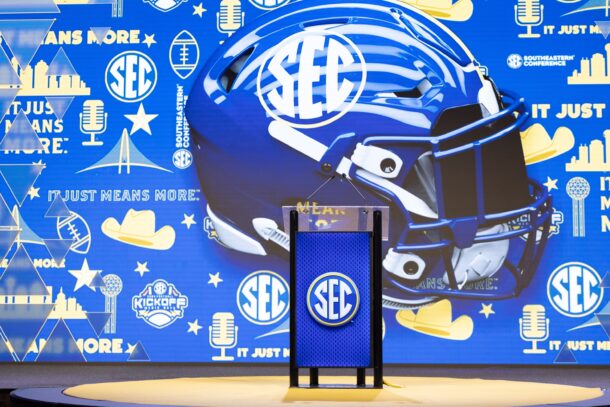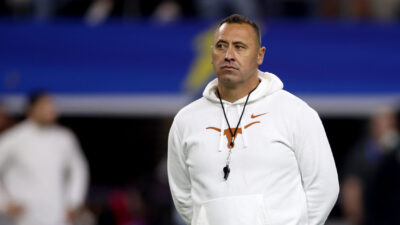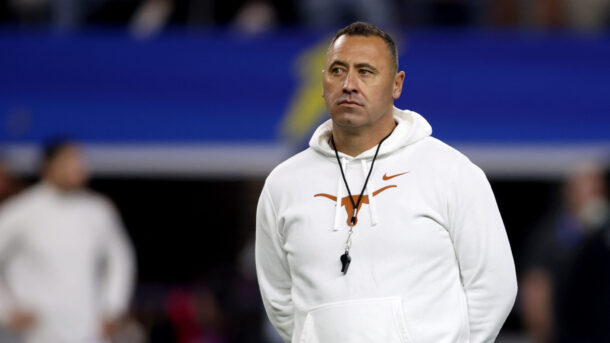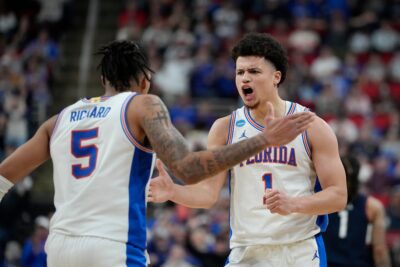Ad Disclosure
Off center: SEC’s greatest talent drain lies at heart of offensive line
By Ethan Levine
Published:
In 2014 the SEC suffered the great quarterback migration, as many of the conference’s (and the nation’s) most talented signal callers bid the college game farewell to begin careers in the NFL. Those signal callers included Johnny Manziel, Connor Shaw, Zach Metternberger, A.J. McCarron and Aaron Murray (the first three listed each started at least one NFL game a year ago).
One year later, the SEC once again finds itself compensating for a massive talent drain at one position in particular. And while that position may be far less glamorous than quarterback, it’s just as important to success on the field.
The position in question is center, a spot often overlooked by casual fans of the game. Centers are buried in the interior of the offensive line, and like other linemen do not record stats that fans can translate into worth on the field. Nevertheless, just like the quarterback, each team plays only one center at a time, and that man is tasked with responsibilities no other player on the field is asked maintain.
Centers make line calls that impact all five linemen. He reads defensive fronts and diagnoses plays before the snap. He’s the captain and the anchor of the line, and must be as in-tune with what the offense and opposing defense are doing on a given play as the quarterback.
That’s why the SEC’s departed talent at the position will loom so large in 2015.
Auburn’s Reese Dismukes, Georgia’s David Andrews and Mississippi State’s Dillon Day are all on their way to the NFL, and like the quarterbacks of a year ago they’re not just the best at what they do in the SEC, but rather in the entire nation.
Dismukes was a four-year starter at Auburn who won the 2014 Rimington Trophy as the nation’s best interior lineman, marking the first time an Auburn Tiger won the award. Many are aware that Auburn’s spread rushing attack is as unorthodox as any offense in the conference, and the lack of a veteran center leading the offensive line may cost the Tigers early in the year despite their talent at the skill positions.
Andrews was another four-year starter at Georgia who maintained consistency on offense a year ago after Murray graduated from UGA. He helped pave the way for runners like Todd Gurley, Nick Chubb and Keith Marshall during his career, and it’s no coincidence that UGA ran for more yards per game in each of Andrews’ four seasons than it did in the season before his arrival.
Day was a two-star recruit in 2010 who started 46 games in four seasons for Mississippi State, proving his evaluators wrong as one of the meanest players in the conference. Some will forever regard him as a “dirty player” (that’s open to interpretation but it can be understood why one would feel that way), but there’s no doubting he set a tone and maintained MSU’s mean streak as the Bulldogs climbed from SEC cellar dwellers to 10-win darlings last fall.
All three centers were both accomplished and experienced, a lethal combination in a college football world that sees more and more underclassmen leave early for the NFL each year. The 12 years of starting experience between the three of them is absurd, and even the stars returning to the SEC at the center position this fall won’t be able to match Dismukes, Andrews or Day’s veteran savvy from 2014.
Those returning stars include Texas A&M’s Mike Matthews, Alabama’s Ryan Kelly, Arkansas’ Mitch Smothers and Missouri’s Evan Boehm, who boast a combined eight years of starting experience (seven at center — Boehm started one year at guard before moving inside). Even after this season concludes those four players will have combined to start only 11 total seasons, one fewer than the three stars leaving the SEC this offseason.
So while the SEC still has talent at the center spot, it has less talent noticeably less experience than last year’s crop. Circling back to the quarterback migration to which the centers exodus can be compared, the SEC still boasted a few star quarterbacks a year ago in Dak Prescott, Blake Sims and Joshua Dobbs, but it had far fewer stars and those stars were far less experienced.
The centers face the same issue in 2015, and entire offensive lines throughout the conference are poised to suffer the consequences. Quarterback battles at Georgia, South Carolina, Ole Miss and Alabama will dominate the spring headlines in SEC country, but battles for the starting center job at Georgia, Auburn and Mississippi State may be just as important for the fall.
A former newspaper reporter who has roamed the southeastern United States for years covering football and eating way too many barbecue ribs, if there is such a thing.




